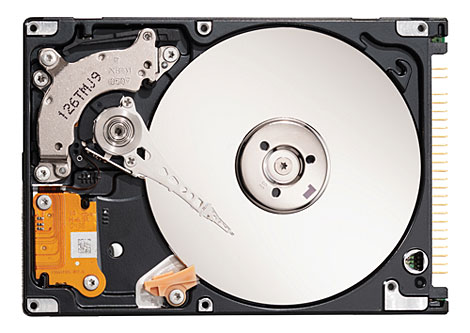Future of hard drives 'settled' until 2015

For years, hard disk makers argued over a defined road map that would provide the industry with a next gen standard because any further increases in data density would require huge investment.
One camp, led by Seagate, lobbied for heat-assisted magnetic recording (HAMR); others, led by Hitachi GST, called for a move to bit-patterned media.
EE Times reports that the two sides converged on HAMR as their next step.
"There's a general consensus the huge shift beyond perpendicular is at least three years out, so mainstream [HAMR] products won't ship until 2014 or 2015," said Mark Geenen, president of IDEMA, the disk drive trade group and host of Diskcon, an annual industry event that will be held next week in Santa Clara, CA.
Today's magnetic disk recording techniques (perpendicular) will hit a brick wall in a generation or two when areal density reaches 1-1.5 terabits per square inch. At this point, stored bits get too small to remain stable; a small amount of heat is all it takes to make nano-sized bits flip their magnetization direction.
HAMR technology uses a magnetic recording medium that is more stable at normal temperatures but needs to be heated before data can be written. The challenge is to heat a very small area quickly enough using the right recording materials that can also integrate laser diodes and recording heads. While difficult, sources say it's easier than the leading alternative--patterning multiple terabits of data uniformly on a platter.
Proponents of bit-patterning have not yet demonstrated how it can be used to mass produce disks and add no more than two dollars to the cost of each disk.
Meanwhile, Japanese disk drive head supplier TDK has already built HAMR heads. According to reports, TDK could potentially manufacture a 2TB 2.5-inch disk drives with 1TB platters using this technology.
But until all the pieces are in place for HAMR, drive makers are expected to use shingle magnetic recording, a variant of perpendicular, to push areal density to or slightly beyond a terabit.
As for bit-patterning, the approach isn't expected to take hold until HAMR reaches a limit, which could be 2020 or beyond when areal density is measured in multiple terabits, notes EE Times.
The Advanced Storage Technology Consortium (ASTCS) pools resources from 13-members including Hitachi GST, Marvell, and Seagate for R&D efforts that will help make the generational leap beyond perpendicular recording.
At Diskcon, leading researchers will share progress toward HAMR technology.
Sources: EE Times, Channel Register, IEE Spectrum
Related:
A 'stone-like' optical disc that lasts for millennia Drive giants plan next gen tech
